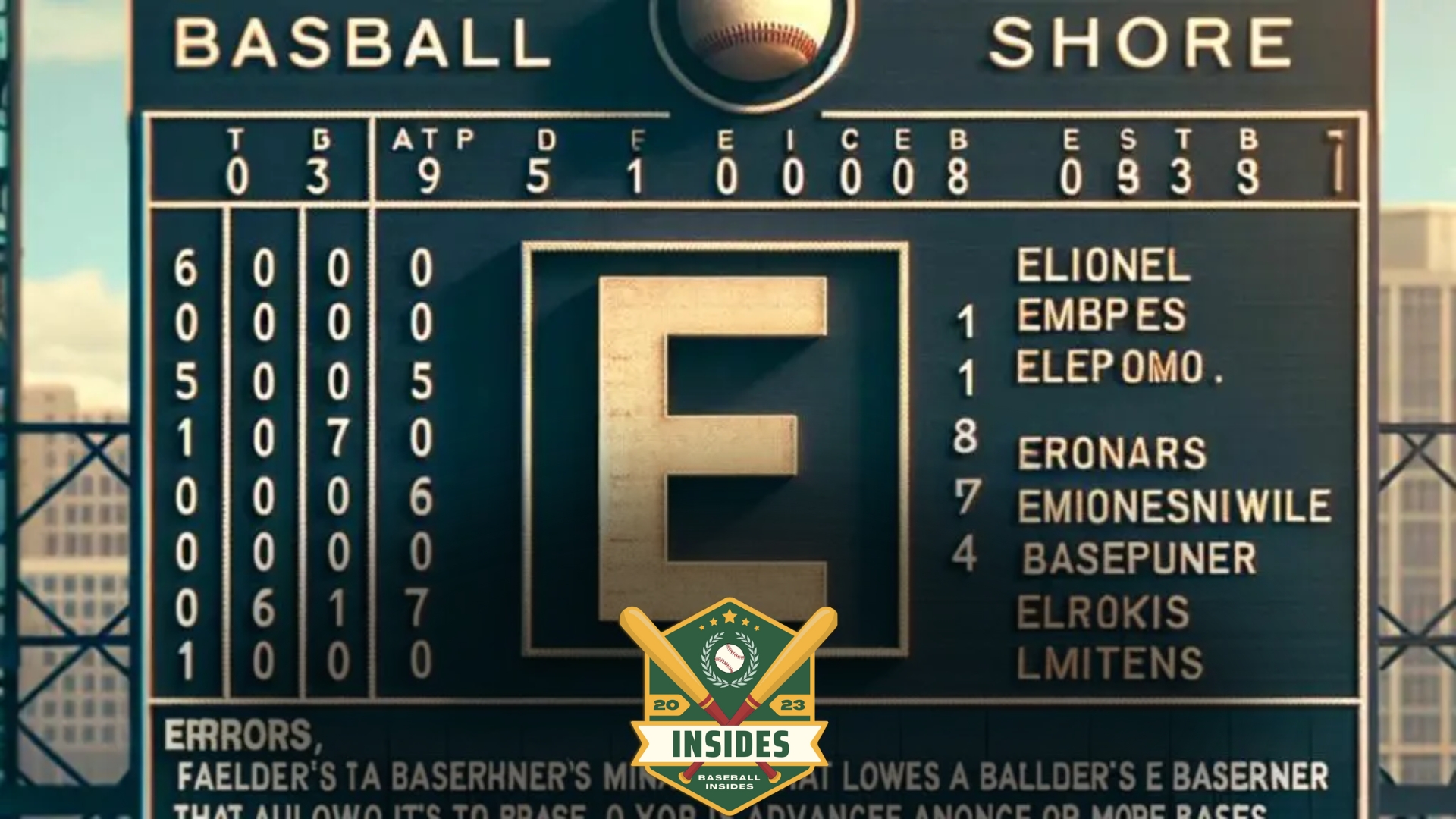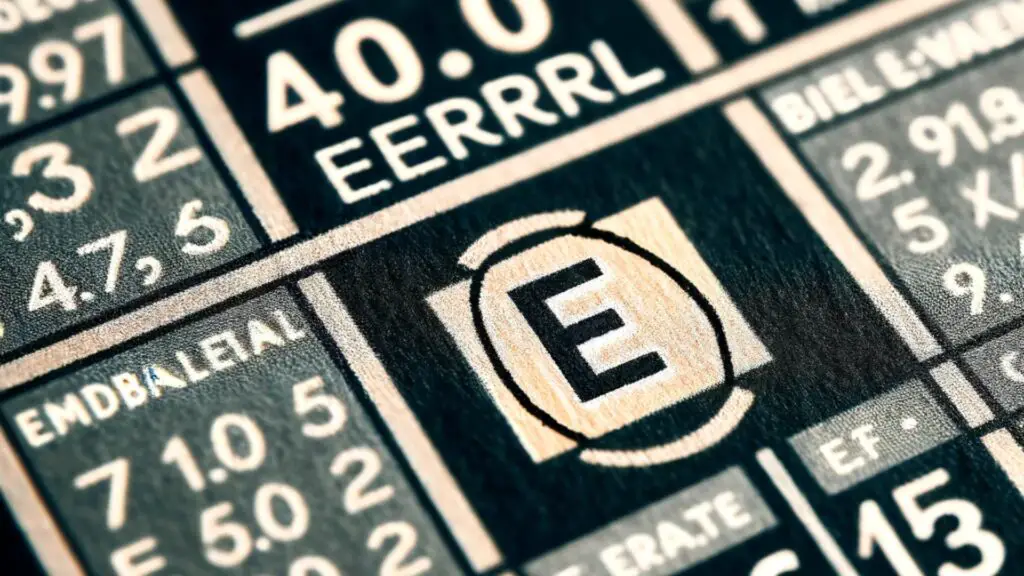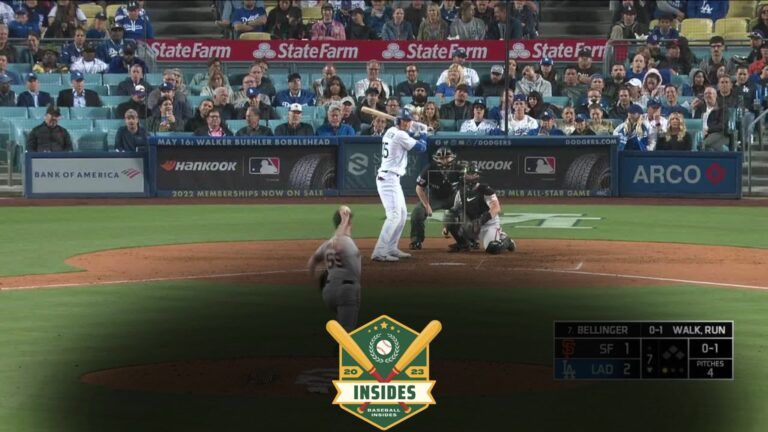
In this article:
Have you ever scanned a baseball scorecard and been puzzled by the mysterious ‘E’ nestled amidst the columns of numbers? Well, you’re not alone!
It’s a question that has perplexed many a baseball fan: “What does E mean in baseball?” But fret not, fellow enthusiasts! Today, we will hit a home run and decode this intriguing aspect of America’s favorite pastime.
In the language of baseball, ‘E’ stands for Error. This little letter indicates when a player has made a mistake during the game that allows a runner to reach base or advance, which should have been prevented with standard effort.
While it might seem like a small letter, an ‘E’ can have a big impact on the game, affecting the play, the player’s stats, and even the outcome of the match.
So, keep reading as we deeply dive into the world of ‘E’ in baseball.
The Definition of an Error in Baseball
Have you ever wondered what “E” means in a baseball scorecard? It’s not a secret code or an insider lingo but a simple term used in baseball. “E” stands for “error”.
Understanding the Concept of an Error
In the easy-going world of baseball, an error is a defensive mistake that allows a batter or a baserunner to reach one or more additional bases. It’s a blunder that alters the game’s flow, potentially giving the offensive team an unfair advantage.
How is an Error Determined?
Determining an error can be quite subjective, with the official scorer having the final say. Usually, an error is noted when a player’s action, or lack thereof, changes what should have been an out into a safe situation for the batter or runner.
Types of Errors in Baseball
Errors in baseball can be broadly categorized into two types:
- Fielding Error: This is the most common type of error and is assigned when a player misplays a ball in a manner that allows the batter or runner to advance.
- Throwing Error: As the name suggests, this error is given when a player’s throw is off target and allows the advancement of a runner.
Impact of Errors on Baseball Scores
Errors do not count towards a pitcher’s earned run average (ERA). Any runs that score because of an error are unearned and do not negatively impact the pitcher’s statistics. However, they impact the team’s overall performance, as an error can change the course of the game.
Errors: A Part of Baseball’s Charm
Errors, while frustrating for players and fans alike, are part and parcel of baseball. They add an element of unpredictability and excitement to the game. After all, these moments of human error make the sport so relatable and endearing to its fans.
In the world of baseball, understanding specific terms and statistics can greatly enhance your appreciation of the game. For those looking to deepen their knowledge, let’s explore some key concepts, starting with a common pitching error.
When a pitcher commits a “Balk in Baseball,” it often results in advancing the base runners, a rule that can significantly impact the course of the game. This mistake by the pitcher can be a turning point, emphasizing the importance of precision and focus on the mound.
Different Types of Errors in Baseball
When it comes to baseball, the term ‘error’ isn’t as simple as it might seem. Represented by the letter ‘E,’ it covers a range of mistakes made during gameplay.
Let’s look at some errors you’ll encounter on the diamond.
Fielding Errors
A fielding error is one of the most common types of errors in baseball. This occurs when a fielder mishandles a ball in a way that allows a runner to advance. Whether it’s a missed catch or a wild throw, these blunders can quickly change the course of a game.
Throwing Errors
Throwing errors are another staple of baseball mishaps. These occur when a fielder makes an inaccurate throw to a base, allowing a runner to advance. It’s a situation that often leads to an unforeseen change in the dynamics of a game.
Dropped Third Strike
While less common, the dropped third strike is an error that can create a surprising twist in a baseball game. The batter can run to first base if the catcher fails to catch the third strike. It can be an unexpected turn of events, especially during tense moments in the game.
Interference Errors
Interference errors are unique, as they involve a player impeding another player’s ability to field a ball or complete a play. This can include a base runner obstructing a fielder or a fielder colliding with a runner.
These errors can significantly shift the momentum of a game, making them a crucial part of baseball strategy.
While errors are seen as negative events, they are integral to baseball’s unpredictable charm. Remember, even the best players make mistakes – it’s all part of the game’s thrill!
How Errors are Recorded in Baseball
Imagine the high-stakes scene: A baseball player sprints across the diamond, eyes locked on the ball soaring overhead. His glove reaches up, but – whoops! – the ball slips right through.
In the world of baseball, this is called an error. But how are these errors recorded in baseball?
Let’s delve into this intriguing aspect of America’s favorite pastime.
The Basics of Recording Errors
In baseball lingo, the letter “E” stands for error. An error is credited to a player when he makes a mistake that leads to the opponent scoring a run or prolonging an inning that should have otherwise ended. It’s the scarlet letter of baseball if you will.
Determining an Error
Determining an error can be a bit subjective. It’s up to the official scorer to decide if the fielder should have made the play using “ordinary effort”.
If the ball’s play was so difficult that the fielder needed more than ordinary effort, it’s not considered an error. Being a baseball player is a pretty tough gig.
Recording the Error
Once an error is determined, it’s recorded in the scorebook using the letter “E” followed by the player’s position number. For example, if the shortstop makes an error, it would be recorded as “E6”. It’s almost like a badge of dishonor.
Impact on Game Statistics
An error can significantly impact the game’s statistics. Any runs scored due to an error are considered unearned and do not count toward a pitcher’s ERA (earned run average). And remember, in baseball, as in life, it’s often the errors that make things interesting!
Another thrilling aspect of baseball is the “Walkoff in Baseball.” This occurs when the home team scores the winning run in the bottom of the final inning, ending the game immediately. It’s a dramatic and exhilarating moment, showcasing the unpredictable nature of baseball where the game can change with a single swing.
Famous Baseball Players Known for Their Errors
When it comes to errors in baseball, even the best players aren’t immune. Some might surprise you, their names etched in the annals of baseball history, not just for their outstanding performances but also for their infamous mishaps.
Let’s take a look at a few, shall we?
Jerry Adair
Unfortunately, Jerry Adair, known for his versatile defensive skills, also had a knack for committing errors. In his 13-year career, he amassed 178 errors, which somewhat overshadows his otherwise solid performance.
Bill Buckner
Who can forget Bill Buckner? Despite a successful career in the Major Leagues, Buckner is widely remembered for his error in Game 6 of the 1986 World Series that allowed the New York Mets to stage an improbable comeback.
Mickey Mantle
Even the great Mickey Mantle is not exempt from this list. One of the most famous players in baseball history, Mantle committed a total of 109 errors in his illustrious 18-year career.
Honus Wagner
Considered one of the greatest players in baseball history, Honus Wagner also holds the record for most errors by a shortstop. Despite his 726 career errors, Wagner’s remarkable achievements still landed him a spot in the Baseball Hall of Fame.
In baseball, as in life, nobody’s perfect. Even the giants of the game have their moments of fallibility. These moments – the errors – remind us of their humanity and, in some strange way, make their feats all the more impressive.
Tips for Reducing Errors in Baseball
Errors can be a baseball player’s worst nightmare. That dreaded ‘E’ marked in the scorebook can certainly send shivers down the spine.
So, how does one minimize these unwanted glitches in the game? Let’s dive in.
Understanding the Game
A solid understanding of baseball is the foundation of error-free play. Knowing when and where to throw and understanding the game’s dynamics can massively reduce errors.
Practice Regularly
As the old saying goes, practice makes perfect. Regular fielding, throwing, and catching training can significantly improve a player’s game and lessen the likelihood of errors.
Fundamentals are Key
The importance of fundamentals in baseball cannot be overstated. Ensure you focus on proper fielding techniques, accurate throwing, and correct positioning.
Physical Fitness
Physical fitness is imperative in baseball. A well-conditioned body is less likely to make errors due to fatigue or lack of agility. Regular workouts and a balanced diet can help keep a player in shape.
Mental Toughness
Baseball is not just a physical game; it’s mental, too. Dealing with pressure situations, maintaining focus, and bouncing back from mistakes are all crucial factors in error reduction.
Use the Right Equipment
Using the right equipment, such as a glove that fits and is broken in, can significantly reduce errors. Remember, comfort and functionality should always be prioritized over style.
The Evolution of Error Statistics in Baseball
Let’s take a walk down memory lane, back to the early days of baseball. When the game was still finding its footing, the concept of ‘error’ was somewhat of a novelty.
It’s a fascinating journey that takes us from the crude scorekeeping methods of the 19th century to the sophisticated statistical analysis of today.
The Early Days of E
Initially, baseball’s error was recognized merely as a ‘misplay.’ The term ‘error’ didn’t debut until Henry Chadwick, a 19th-century baseball pioneer, began using it in his game reports. It was his way of distinguishing between fielding mistakes and hits.
The Rise and Fall of E
In the subsequent years, error statistics soared in importance. Teams and players were judged heavily on their ability to avoid errors, with a low E being a mark of high skill. However, with the advent of sabermetrics in the late 20th century, the traditional notion.
Where We Stand Today
While error statistics still exist today, they’re not nearly as influential as they once were. Modern metrics like Defensive Runs Saved (DRS) and Ultimate Zone Rating (UZR) offer a more comprehensive evaluation of a player’s defensive prowess.
Nonetheless, the humble ‘E’ still holds a place in baseball’s rich tapestry, a testament to its enduring legacy.
For those interested in pitching performance, understanding “What Does ERA Mean in Baseball?” is crucial. ERA stands for Earned Run Average, a statistic that measures the number of earned runs a pitcher allows per nine innings pitched, providing insight into their effectiveness. It’s a key metric for comparing pitchers and determining their impact on the game.

Frequently Asked Questions
1. What is the Meaning of “E” in Baseball?
In baseball, “E” is an abbreviation for error. An error is a defensive misplay by a fielder that allows a batter or runner to reach base or advance to an additional base.
2. How is the Number of Errors Displayed on a Scoreboard?
Each team’s number of errors is typically displayed on the scoreboard along with the other game statistics, such as runs, hits, and innings. It is usually represented by the letter “E” followed by a number.
3. Can You Explain How to Read a Baseball Scoreboard?
A baseball scoreboard provides important information about the game, including the score, inning, number of runs, hits, and errors for each team. Symbols such as “R” for runs, “H” for hits, and “E” for errors are commonly used.
4. What Does an Error Mean Regarding the Pitcher’s Performance?
An error is not counted against a pitcher’s earned run average (ERA) because it is considered a defensive misplay. However, if an error leads to a run being scored, it will be an unearned run for the pitcher.
5. How is an Error Different From a Hit?
An error occurs when a fielder makes a mistake that allows a batter or runner to reach base or advance, while a hit is a successful at-bat without a defensive misplay. Errors negatively impact a player’s fielding percentage, while hits contribute to a player’s batting average.
6. What is the Significance of Errors in a Box Score?
Errors are recorded in a box score to overview a game’s statistics comprehensively. They are important indicators of a team’s defensive performance and can often affect the outcome of a game.
7. How Does the Number of Errors Impact the Game Outcome?
The number of errors a team commits can directly influence the number of runs scored by their opponents. More errors generally lead to more runs for the opposing team, making it crucial for teams to minimize defensive mistakes.
8. Is There an Abbreviation for Errors Other Than “E”?
No, “E” is the universally accepted abbreviation for errors in baseball. It is used across all levels of the sport, from Little League to Major League Baseball.
Conclusion
In the grand old baseball game, a letter as simple as ‘E’ carries profound weight. It is ‘Error’, a statistical measure that captures a player’s defensive missteps.
Though unenviable, it is integral to the game’s numerical landscape.
While no player wishes to be associated with ‘E’, it serves as a sobering reminder that humans are prone to error even in a game of skill and strategy. It underscores the importance of defensive proficiency in baseball, influencing matches and careers.
So, the next time you’re engrossed in a baseball game, watch for the ‘E’. It might just be the game-changer!






